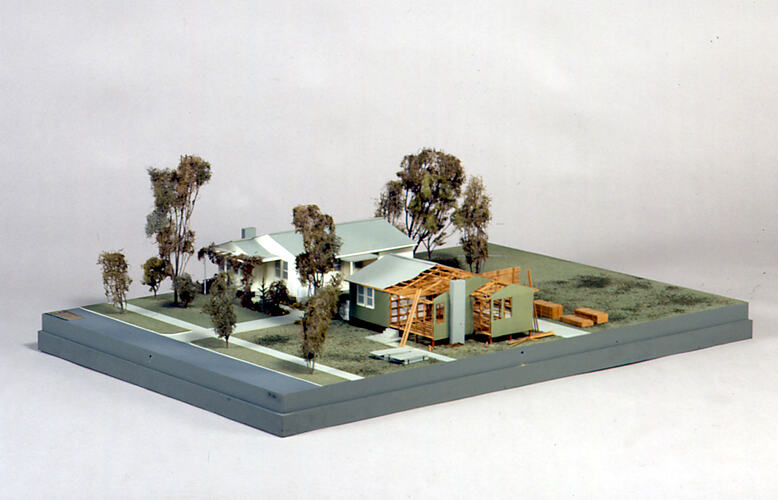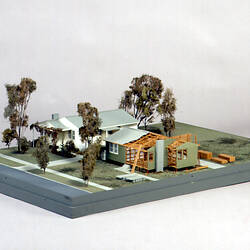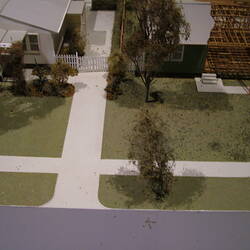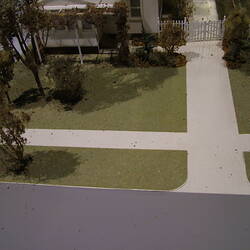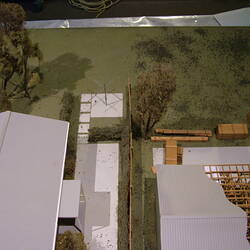In the early years of post-war reconstruction, both housing and labour were in short supply. More migrant workers were desperately needed, but government policy required employers to guarantee them housing as well as jobs. The building industry, already overtaxed, could not build more houses without more labour: labour could not be imported without more housing. It was an impasse!
The bottle-neck was broken in 1948 by the Victorian Minister for Transport, Councilor (later Sir William) Kent-Hughes, who urgently required migrant workers for the Victorian railways. Since they had to be accommodated, he reasoned they must bring their own houses 'on their backs'. Hence 'Operation Snail' - an integrated package of overseas recruitment, migration and public housing.
The Snail Houses were designed in Melbourne for Australian conditions and standards, and mass produced in the form of kits of pre-cut and part-assembled timber components which could be speedily erected in the field by a small and largely unskilled labour force. Produced largely in England and supplemented from local sources wherever practicable, the kits were packaged, labelled and shipped to warehouses ready for delivery to the sites, complete with do-it-yourself instruction manuals.
A range of 44 types of two, three and four bedroomed houses could be assembled from the same basic kits, enabling a wide range of site layout requirements to be met, with correct orientation and monotonous repetition avoided.
Within a year this housing project between Britain and Australia was producing houses at a rate of 40 per week. Other government departments joined the scheme, leading to over 5000 houses being erected on specially developed estates and individual sites throughout Victoria and New South Wales. Major participants were the Victorian Railways; the State Electricity Commission (the townships of Newborough, Yallourn and Mt Beauty, Kiewa); State Rivers Water and Supply Commission (the township of Eildon); the Commonwealth Department of Works on behalf of various Armed Services establishments, and NSW coalfields.
More Information
-
Keywords
-
Authors
-
Article types
